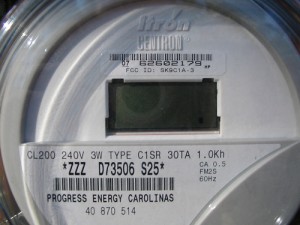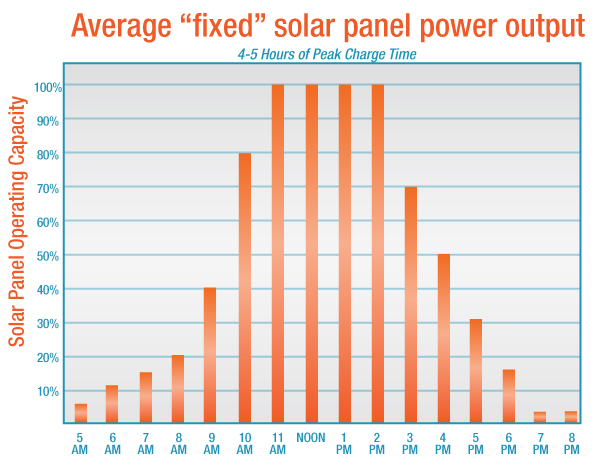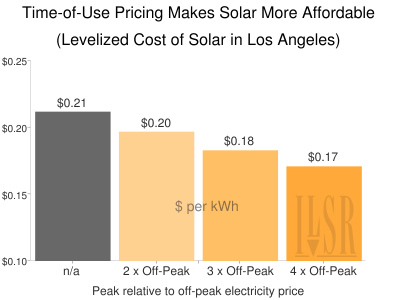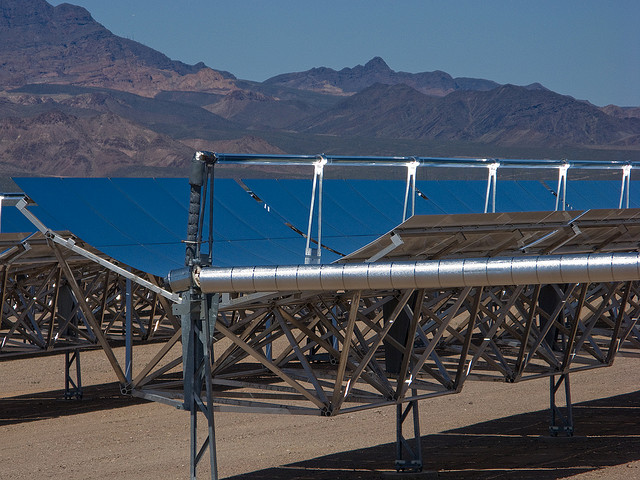 Update 1/12/12: I created a new post to reflect the current time-of-use pricing plan for Los Angeles
Update 1/12/12: I created a new post to reflect the current time-of-use pricing plan for Los Angeles
Update 1/10/12: Fixed a missing pie chart and corrected a miscalculation caught by a reader
What if electricity cost more when the sun was shining?
Many utilities are using new electronic “smart meters” to adjust the price of electricity as often as every 15 minutes, to reflect supply and demand. And charging more when electricity is in short supply can be good news, making investments in distributed solar power pay off faster.
Time-of-use (TOU) pricing is a different billing method for electricity, where the customer pays based on the time of day of using electricity rather than a flat rate per kilowatt-hour consumed. The premise is that electricity is more expensive when in high demand (e.g. by air conditioners in the afternoon on hot, sunny days) and that pricing accordingly will help reduce demand.
For example, customers in Los Angeles on a TOU pricing plan have a flat rate for electricity in the fall, winter and spring. But in the summer, they pay significantly more for electricity used during “peak hours,” when the power system is at its maximum use. In June to August, electricity used from midnight to 9 AM (and from 8 to 11 PM) costs 10.8 cents per kilowatt-hour. But each kWh used from 1 to 4 PM costs 22.2 cents.
This pricing scheme can act as an incentive to go solar, because solar panels tend to operate at their highest capacity during summer months. The following chart shows the solar radiation falling on Los Angeles during the various seasons.

Solar panels also tend to have higher output during the peak hours of the day. In fact, the California Public Utilities Commission found that solar tends to have a 60% capacity factor (produce 60% of its maximum) during peak electricity periods. The following chart from SolarStik illustrates:

The Economics of Time-of-Use Pricing for Solar
So what will a time-of-use pricing plan mean for the economics of solar in Los Angeles? It means solar customers save more money.
About 22 28% of annual solar production in Los Angeles comes during the summer season, and over 90% of that during peak and near-peak (shoulder) periods.

On average, year-round, the cost of grid electricity on a TOU plan is 13.7 cents during the daylight hours a rooftop solar array is producing,  modestly higher than the 12.7 cents customers pay on a flat rate plan. It’s not an enormous difference, but some perspective helps. The cost of solar has fallen by about 7% per year over the past 30 years. The time-of-use pricing difference in Los Angeles is about 7%, as good as an additional year of solar panel price decreases.
modestly higher than the 12.7 cents customers pay on a flat rate plan. It’s not an enormous difference, but some perspective helps. The cost of solar has fallen by about 7% per year over the past 30 years. The time-of-use pricing difference in Los Angeles is about 7%, as good as an additional year of solar panel price decreases.
If the peak price were about 50% higher (33 cents instead of 22 cents), the average value of electricity produced by solar would be 14.8 cents, compared to 12.7 cents, good for nearly two years of price declines.
For now, time-of-use electricity pricing may not be a panacea, but it’s a good policy for helping finance distributed solar.
Note: For the levelized cost of solar in Los Angeles, we used an installed cost of $4.40 per Watt, 80% financed over 10 years, with a 25-year project life.





